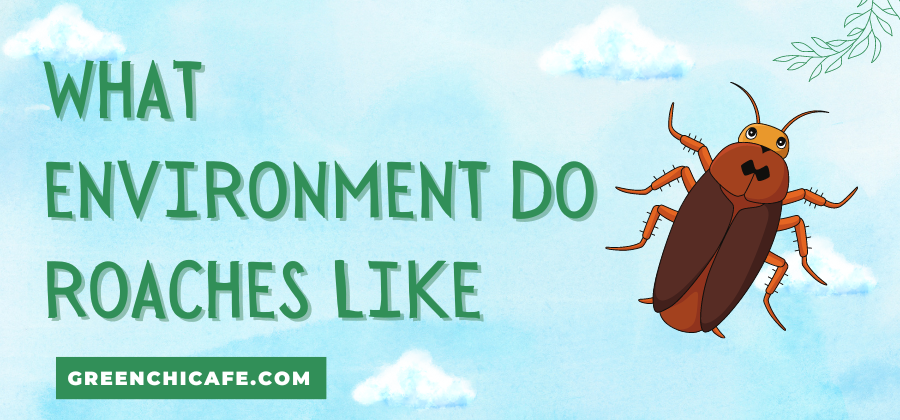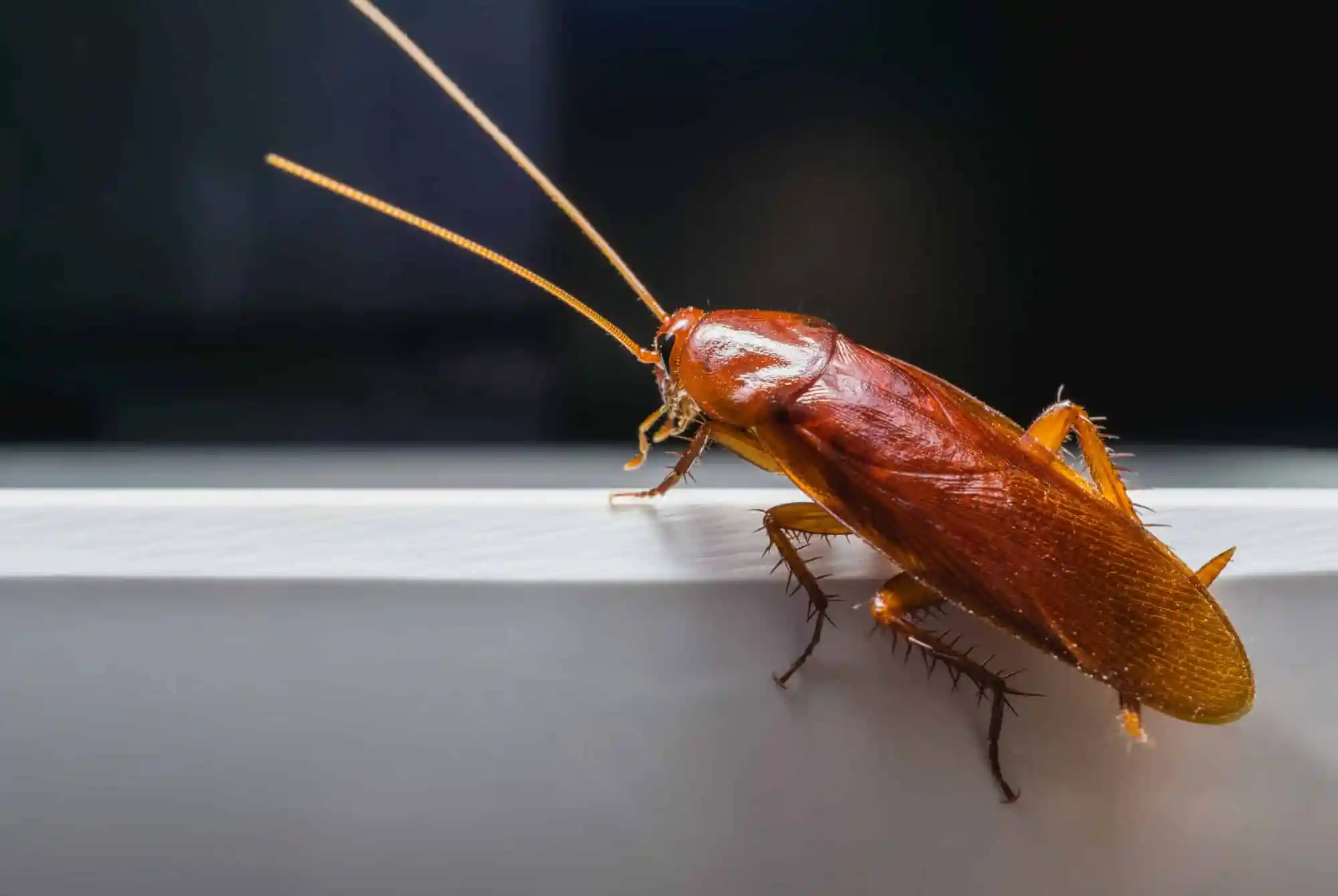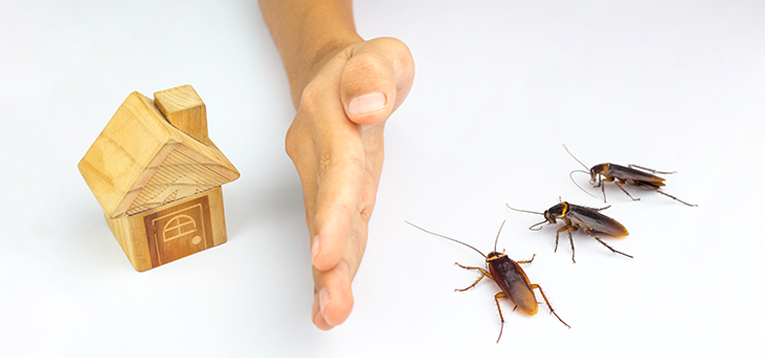Cockroaches thrive in warm, dark, and humid environments, especially in places where they can easily access food and water.
Understanding what attracts roaches and what conditions they need to survive can help prevent infestations.
This article explores the ideal environments for roaches, including what resources they seek and what factors determine where they establish nests and colonies.
What Environment Do Roaches Like?
Cockroaches prefer warm, humid, indoor environments with access to food, water, and shelter.
Kitchens, bathrooms, basements, and other cluttered areas provide ideal harborage.
Key Points
- Cockroaches thrive in temperatures between 75-86°F and environments with humidity above 70%.
- They are attracted to food, water, and clutter, which provide harborage areas.
- Kitchens, bathrooms, basements, and voids offer suitable harborage since they contain moisture and resources.
What Specific Conditions Do Cockroaches Thrive In?
Cockroaches prefer warm temperatures between 75-86° F.
They favor dark, humid areas with access to water.
Roaches need moisture for survival and look for humid environments with relative humidity above 70%.
They can live without food for a month but will die within two weeks without water.
Cockroaches also avoid direct sunlight since they are nocturnal creatures.
Where Do Cockroaches Establish Nests and Colonies?
Cockroaches nest in tight, humid areas close to resources.
Kitchens and bathrooms provide ideal harborage since they contain food, water, and clutter.
Roaches often nest behind or under appliances, inside cabinets, and within walls or floor voids.
Laundry rooms also appeal to roaches due to available water.
They prefer areas where pipes or drains offer access to moisture.
Basements and crawlspaces provide excellent harborage if dampness is present.
Can Cockroaches Live Outside?
Cockroaches can survive outdoors but prefer indoor environments.
Certain species like the Oriental cockroach live primarily outdoors.
Some roaches move between outdoor spaces like mulch beds, leaf litter, or trees and indoor areas.
Outdoor populations often migrate indoors in search of food and water.
Cockroaches that live outdoors face greater temperature fluctuations and drier conditions.
However, roaches in tropical climates can thrive year-round outside.
What Factors Limit Roach Environments?
Low temperatures below 50°F slow cockroach activity and reproduction.
Dry environments with humidity under 70% increase mortality.
Lack of food and water sources also limits roach survival.
Direct sunlight deters roaches since they avoid well-lit areas.
Reducing clutter and sealing cracks restrict access to key resources.
Traps or insecticides make environments inhospitable and reduce infestations when applied properly.
Strict sanitation limits food and water availability.
Monitoring with sticky traps helps identify problem areas.
Can Cockroaches Transmit Diseases in Shared Environments?
Cockroaches can transmit bacteria like Salmonella and E. coli by contaminating food and surfaces.
They pick up pathogens as they move through sewers and garbage.
Roach excrement and body parts also contain allergens.
However, roaches are not direct vectors of human diseases.
The biggest risk is from germs they spread by crawling on unsanitary surfaces.
Their presence indicates unsanitary conditions since they thrive in areas with poor sanitation.
What Attracts Cockroaches to Your Home?
Cockroaches enter homes in search of food, water, and shelter.
They are especially attracted to kitchens and bathrooms since these rooms contain edible items and moisture.
Roaches also seek out clutter, which provides hiding spots and harborage areas.
Appliances like stoves, refrigerators, and dishwashers appeal to roaches because they offer warmth and potential food sources.
Plumbing fixtures draw roaches due to the availability of water.
Roaches detect odor molecules and are attracted to areas that smell like food or other roaches.
Openings around pipes or cracks allow outdoor roaches to migrate indoors.
Improperly sealed food packages or containers attract foraging roaches.
Overall, cockroaches are drawn to homes that provide ideal environments with their basic needs met.
What Are Cockroaches Most Attracted To?
Cockroaches are highly attracted to starchy foods and crumbs that provide carbohydrates and protein.
They also seek out water sources like leaky pipes, pet bowls, or condensation.
Cardboard and paper items appeal to roaches since they consume cellulose.
Roaches gravitate toward warm environments near ovens, heaters, or appliances that generate warmth.
They are also attracted to the aggregation pheromones secreted by other roaches, which signal ideal conditions.
The scent of previously digested food in roach feces and residue attracts roaches.
Tight spaces that provide hiding spots and reproduction sites are very attractive to roaches.
Overall, roaches are most attracted to food, water, warmth, shelter, other roaches, and items like cardboard that they can eat.
What Keep Cockroaches Away?
The key strategies to deter cockroaches include sanitation, moisture control, clutter reduction, sealing cracks, trapping, and insecticide application.
Cleaning food debris, fixing plumbing leaks, repairing screens, storing food in airtight containers, and taking out the trash regularly to keep roaches away.
Controlling moisture by fixing leaks, improving ventilation, and dehumidifying prevents conducive conditions.
Removing clutter eliminates harborage opportunities.
Caulking and sealing holes prevent entry.
Insecticide baits, boric acid, diatomaceous earth, and sticky traps help repel roaches.
Essential oils like peppermint and tea tree also deter roaches.
Monitoring and addressing conducive conditions before infestations start is the best approach.
What Attracts Roaches to Kill Them?
Using roach attractants strategically inside traps or contained bait stations helps control populations.
Food attractants like peanut butter, breadcrumbs, or sweets lure roaches into traps.
Pheromone-mimicking attractants contain molecules identical to those in roach aggregation pheromones to draw them in.
Sex pheromones attract male roaches seeking to mate.
Water sources like gels or damp harborage materials appeal to thirsty roaches.
Allowing attractants only in designated traps or baits prevents luring roaches into exposed areas to proliferate.
The key is enticing roaches into controlled and contained areas for removal without attracting them elsewhere.
Summary
Cockroaches prefer warm, humid, and dark environments with access to food, water, and shelter.
They establish nests and colonies in kitchens, bathrooms, basements, or other areas near moisture and clutter.
While roaches can survive outdoors, they thrive best indoors in human-made structures.
Monitoring conditions inside and outside the home is key to preventing infestations by making environments inhospitable for roaches.
FAQ
What Keeps Cockroaches Away?
Ensuring environments stay dry, reducing clutter, sealing cracks, applying insecticides, maintaining cleanliness, and using traps help deter roaches. Monitoring conditions and quickly addressing conducive conditions prevents infestations.
How Long Can Cockroaches Live Without Food?
Cockroaches can survive up to one month without food. They cannot live long without water and will die after two weeks or less if deprived of all moisture.
What Chemicals Repel Roaches?
Insecticide dusts containing boric acid or diatomaceous earth repel roaches. Some essential oils like peppermint, tea tree, and citrus oils also deter roaches when applied properly. Avoid roach sprays and foggers which often just scatter them.
At GreenChiCafe, we are passionate about the environment and our natural world. Please check out our website for more great content on important environmental topics!

Annie is a passionate environmental writer and activist. She has been writing about sustainability, conservation, and green living for over 15+ years. Annie is dedicated to raising awareness about environmental issues and providing practical tips for living an eco-friendly lifestyle. When she’s not writing, you can find her volunteering with local environmental organizations, teaching workshops on zero waste living, or exploring nature. Feel free to get in touch with Annie: annie@greenchicafe.com


